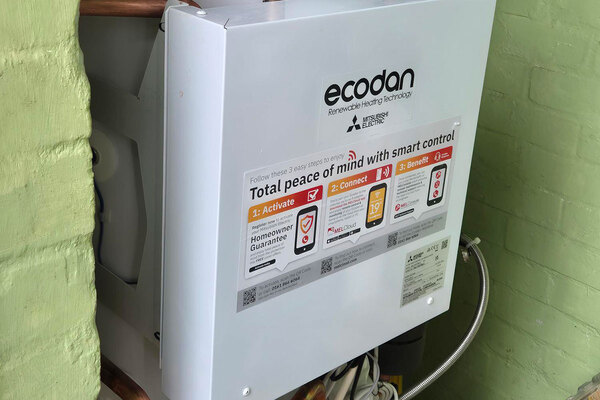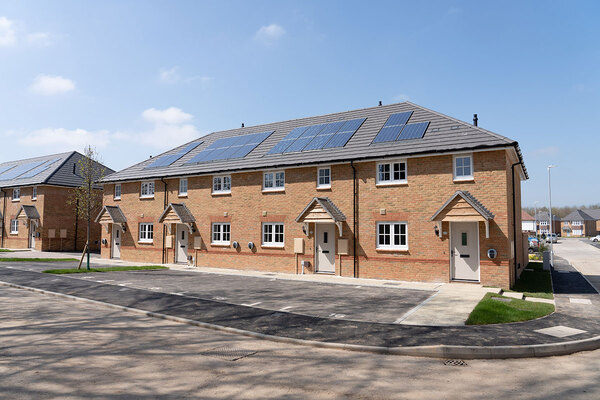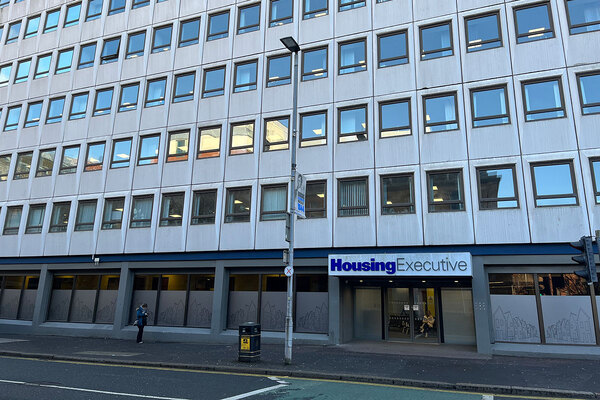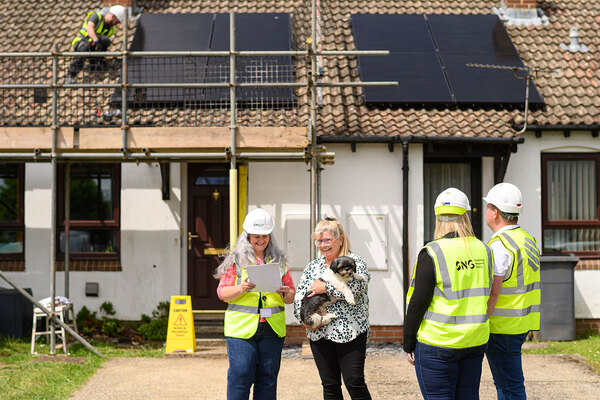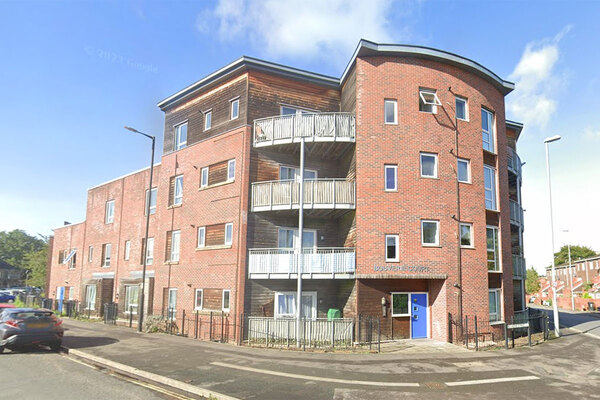You are viewing 1 of your 1 free articles
Labour’s EPC plans need to keep pace with social housing retrofit strategies
The government’s energy efficiency rules for social housing need to match the ambitions of social landlords, writes James Traynor, managing director of ECD Architects
At the recent Labour Party Conference, Ed Miliband announced plans for all social housing in England to achieve an Energy Performance Certificate (EPC) rating of at least C by 2030. This is subject to a consultation, which is due to take place later this year, and intended to help lift tenants out of fuel poverty, as well as helping the UK reach its climate goals.
Measures for improving the energy efficiency of homes are important. However, in this instance they risk falling short of achieving their desired goals and lagging behind the progress already seen in the social housing sector.
Although there aren’t any minimum EPC rating requirements currently in place for social housing, local authorities and housing associations are well on their way to retrofitting homes to improve EPC ratings.
Energy report data from the 2023 English Housing Survey was published in July this year. It shows that during the decade from 2012 to 2022, housing associations improved the proportion of housing stock with an EPC rating of C or better from 40% to 72%. During the same period, the volume of local authority homes with the same EPC standards rose from 32% to 68%.
This progress means that, as of 2022, there were approximately 1.2 million social homes with an EPC rating below C, which would need upgrading to hit Labour’s proposed target for 2030. This target isn’t that much of a stretch and many social landlords are already taking a much more sophisticated view of energy performance. Rather than simply striving to boost EPC ratings, they are looking at how they can upgrade homes to have net zero operational energy.
The strive towards a minimum EPC rating of C will largely involve the continued retrofitting of existing properties to reduce energy usage. For example, loft insulation, cavity wall insulation and double-glazing are reasonably straightforward measures that minimise heat loss.
“Social housing retrofit strategies are moving beyond energy efficiency and increasingly being designed to reduce the reliance on fossil fuels and make renewables a reliable source of energy provision for existing social homes”
Local authorities and housing associations are excelling in these areas and we’re seeing them move to a higher level of energy performance. There’s a growing trend of emphasis being placed on clean energy generation and distribution, with steps being taken to utilise photovoltaics and PV batteries, air source heat pumps, heat recovery ventilation and thermal stores.
Social housing retrofit strategies are moving beyond energy efficiency and increasingly being designed to reduce the reliance on fossil fuels and make renewables a reliable source of energy provision for existing social homes.
These strategies are also mindful of reducing carbon and any environmental impact during works. For example, ECD Architects was recently involved in the retrofit of 1930s housing stock for Cambridge City Council, where existing materials and components were reused wherever possible, including roof tiles and floor coverings. New materials with long life expectancies and low embodied carbon – including mineral wool, hemp and jute insulation – were also specified.
The use of heating networks is also more advanced in social housing than in many other types of domestic dwellings. The networks supply heat from a central source to multiple homes, avoiding the need for individual boilers or heaters in properties. They can use different sources to generate heat, including biomass and biogas, as well as harnessing waste to create energy.
The networks deliver low-carbon power and are being utilised by local authorities and housing associations to decarbonise the generation and distribution of heat, while also reducing costs. Progress here shows again how social housing landlords are taking a strategic and long-term view of energy performance by embracing technologies, systems and models that are more sophisticated than EPC ratings.
A bigger challenge for social landlords than achieving a minimum EPC rating of C is minimising tenant disruption during net zero energy improvements. A pragmatic approach must be taken towards retrofitting properties, which requires tenant engagement and careful consideration of works to suit individual households.
This requires time and investment, but is being prioritised by housing associations and local authorities as improvements can yield longer-term benefits for lower energy generation costs.
“Social housing landlords are taking a strategic and long-term view of energy performance by embracing technologies, systems and models that are more sophisticated than EPC ratings”
There’s a growing realisation that retrofitting strategies can be phased and planned to avoid displacement of tenants and to also reduce the overall impact on homes. Sub-floor insulation, for example, in living and dining rooms is potentially one of the most disruptive retrofit measures, but one that can have a significant impact on heat loss and comfort. It’s possible to carry out the insulation work on floors externally, rather than inside a home to avoid having to take out vital living spaces such as kitchens.
Social landlords are proactively looking at these types of energy performance measures. They are pursuing ambitious options that not only improve energy efficiency, but also reduce power generation and supply costs. This will prove a more practical approach to addressing fuel poverty and supporting wider efforts to reach net zero.
Energy performance and efficiency strategies throughout social housing are evolving beyond EPC ratings and government strategies and funding should follow suit.
James Traynor, managing director, ECD Architects
Sign up for our asset management newsletter
Already have an account? Click here to manage your newsletters



